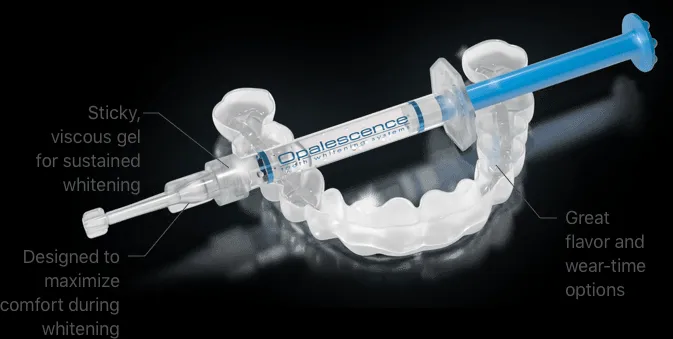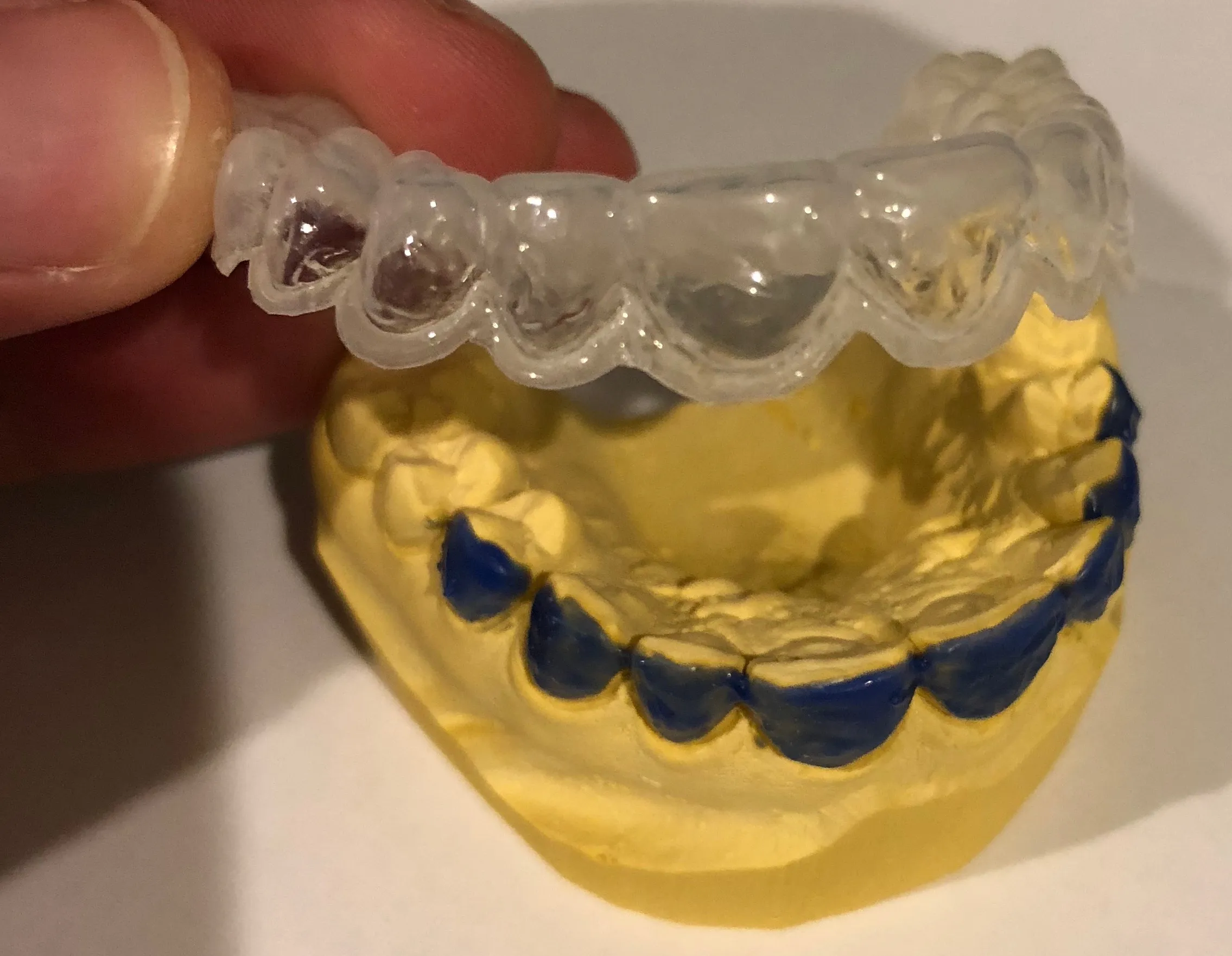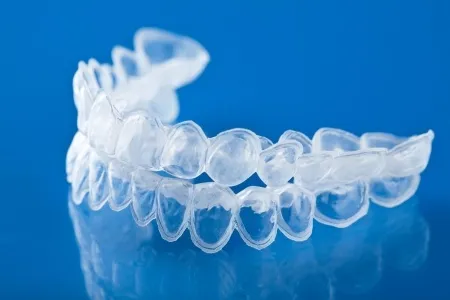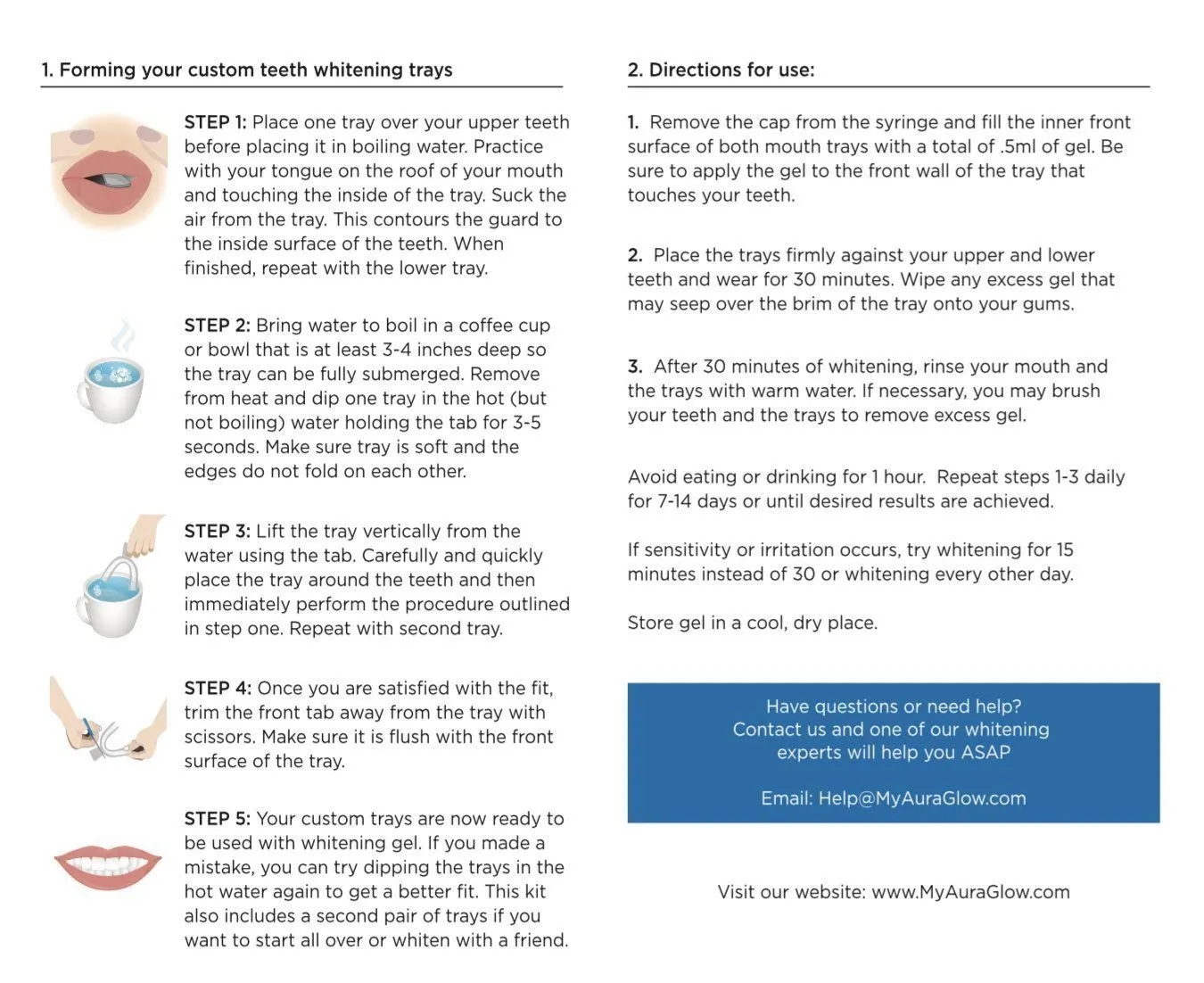Understanding Whitening Tray Wear Time
Whitening trays have become a popular method for achieving a brighter smile, but understanding the correct wear time is crucial for effective and safe results. The duration you should wear your whitening trays isn’t a one-size-fits-all answer; it depends on a multitude of factors, including the type and concentration of the whitening agent, the condition of your teeth, and the specific instructions provided by your dentist or the product’s manufacturer. Proper wear time ensures that you achieve the desired level of whitening without causing unnecessary harm to your teeth and gums. This guide explores the key elements that determine how long you should wear your whitening trays and how to optimize your experience for a radiant and healthy smile.
Factors Influencing Whitening Tray Wear Time
Several elements influence the recommended wear time for whitening trays. These factors are interconnected, and understanding them will help you tailor your whitening routine for the best results. Ignoring these aspects could lead to unsatisfactory outcomes or, worse, oral health issues. Always consult with your dentist to personalize your whitening plan, considering all the elements specific to your situation and needs. The following sections break down these critical components to provide a comprehensive understanding of how to determine the ideal wear time for you.
Type of Whitening Agent

The type of whitening agent used in your trays is a primary factor in determining wear time. The most common agents are hydrogen peroxide and carbamide peroxide. Hydrogen peroxide is a stronger bleaching agent and often requires shorter application times, while carbamide peroxide breaks down into hydrogen peroxide and typically needs to be worn for longer periods. The specific formulation and chemical makeup of the whitening gel directly impact how quickly and effectively it can lighten your teeth. It’s essential to know which agent your trays contain, as this will influence the overall treatment plan, from the duration of each session to the total length of the whitening process. (Image: types-of-whitening-agents.webp)
Concentration of the Whitening Agent
The concentration of the whitening agent significantly impacts wear time. Higher concentrations of hydrogen or carbamide peroxide can produce faster results but also increase the risk of side effects like tooth sensitivity and gum irritation. Lower concentrations are generally safer but require longer wear times to achieve the desired whitening effect. Professional whitening treatments often use higher concentrations under dental supervision, while over-the-counter products usually contain lower concentrations for safety. The choice of concentration should be based on your dental health, the extent of discoloration, and your tolerance for potential side effects. Your dentist can guide you in selecting the appropriate concentration to suit your specific needs and circumstances.
Tooth Sensitivity and Condition
The condition of your teeth and your level of sensitivity are critical considerations. Individuals with sensitive teeth may experience discomfort or heightened sensitivity during the whitening process, necessitating shorter wear times or the use of desensitizing products. Pre-existing dental conditions, such as cavities, exposed roots, or gum recession, can also affect the recommended wear time and treatment plan. Your dentist will assess your oral health to identify any potential issues that may affect your whitening treatment and recommend adjustments accordingly. It is crucial to communicate any discomfort or sensitivity you experience during the process to your dentist.
Custom vs. Over-the-Counter Trays

The type of trays you use—custom-made or over-the-counter—affects the recommended wear time. Custom trays, crafted by your dentist, provide a more precise fit, ensuring that the whitening agent contacts your teeth evenly and minimizes the risk of gum irritation. They are generally designed to be worn for shorter periods. Over-the-counter trays may not fit as snugly, potentially leading to uneven whitening and longer wear times. Because these trays aren’t tailored to your mouth, the application of the whitening agent may not be as efficient. (Image: custom-whitening-trays.webp)
Optimizing Your Wear Time for Best Results
To get the best results from your whitening trays, it’s important to adopt certain practices. Following your dentist’s instructions precisely, avoiding common mistakes, maintaining excellent oral hygiene, and actively monitoring for any signs of sensitivity or adverse reactions will help you achieve a brighter smile safely and effectively. By paying attention to these details, you can maximize the benefits of your whitening treatment while minimizing potential risks. Consistency, patience, and communication with your dental professional are key to successful whitening.
Following Dentist’s Instructions
The guidance provided by your dentist is paramount. They will create a personalized whitening plan based on your specific needs, the type of trays you’re using, and the whitening agent’s concentration. Always adhere to their recommendations regarding wear time, frequency of use, and any supplementary instructions. Ignoring these guidelines can lead to unsatisfactory results, over-whitening, or even damage to your teeth and gums. If you have any questions or concerns, contact your dentist directly for clarification and advice.
Avoiding Common Mistakes

Avoid common mistakes to maximize the effectiveness and safety of your whitening treatment. Overuse is a frequent error; exceeding the recommended wear time or frequency can increase the risk of tooth sensitivity and gum irritation. Additionally, ensure the trays fit correctly, as improper fit can lead to uneven whitening or contact with soft tissues. Swallowing the whitening agent should be avoided, so excess gel should be removed before inserting the trays. Finally, be sure to store your trays and whitening gel as directed to maintain their effectiveness and prevent contamination. These precautions will help ensure a successful outcome.
Maintaining Oral Hygiene
Maintain excellent oral hygiene throughout the whitening process. Brush your teeth gently before inserting the trays to remove surface debris, but avoid brushing immediately afterward, as this can increase sensitivity. Floss daily to remove plaque and food particles. Regular dental check-ups and professional cleanings are also essential to maintain optimal oral health. Good oral hygiene supports the effectiveness of the whitening treatment and helps protect your teeth and gums from potential side effects. (Image: oral-hygiene.webp)
Monitoring for Sensitivity and Adjusting Wear Time
Regularly monitor your teeth for any signs of increased sensitivity or gum irritation. If you experience any discomfort, consult with your dentist promptly. They may recommend reducing the wear time, using a lower concentration of the whitening agent, or using a desensitizing toothpaste. It is important not to ignore any signs of adverse reactions. Adjusting the wear time or treatment plan as needed ensures a more comfortable and safer whitening experience.
Potential Risks and Side Effects

While whitening trays are generally safe, potential risks and side effects exist. Understanding these potential outcomes helps you make informed decisions and take necessary precautions. Tooth sensitivity, gum irritation, and, in rare cases, enamel damage, are some of the possible effects. Being aware of these risks and consulting with your dentist can help mitigate any negative impacts and ensure your treatment is as safe and effective as possible. Always pay attention to your body’s reactions during the process.
Tooth Sensitivity
Increased tooth sensitivity is a common side effect of whitening treatments. This sensitivity may manifest as a sharp, temporary pain when consuming hot or cold foods or drinks. It typically subsides shortly after stopping the whitening treatment or reducing the wear time. Using desensitizing toothpaste can also help alleviate the discomfort. If the sensitivity persists or worsens, consult with your dentist to rule out any other underlying causes. (Image: tooth-sensitivity.webp)
Gum Irritation
Gum irritation, characterized by redness, swelling, or soreness, is another potential side effect. This often occurs if the whitening agent comes into contact with the gums due to an improper fit of the trays or overuse. Ensuring a proper tray fit and following the dentist’s instructions can minimize the risk. Rinsing your mouth with water after removing the trays can also help. If gum irritation persists, contact your dentist for advice. They might recommend adjustments to your treatment plan to prevent further irritation.
Enamel Damage

Enamel damage is a rare but serious potential side effect. Overuse of whitening agents or use of high-concentration products can potentially weaken tooth enamel, increasing the risk of cavities or other dental issues. To avoid this, strictly adhere to the recommended wear time and consult your dentist before starting or changing your whitening regimen. They can monitor your teeth and gums to detect any signs of damage and provide guidance to mitigate the risk.
When to Consult Your Dentist
Consulting your dentist is an integral part of any whitening treatment. Your dentist can provide tailored advice, monitor your progress, and address any issues that arise. They can also provide alternative whitening methods. Your dentist’s expertise ensures you achieve the desired results safely and effectively. If you experience any discomfort, changes in tooth color, or other concerns, it’s essential to seek professional advice.
Addressing Discomfort or Pain
If you experience any pain or discomfort during the whitening process, consult your dentist immediately. They can help you determine the cause and recommend appropriate solutions. These may include reducing the wear time, switching to a lower concentration of the whitening agent, or using desensitizing products. Ignoring pain can lead to further dental problems. Your dentist can provide personalized care to alleviate any adverse effects and ensure your whitening experience is comfortable and safe.
Changes in Tooth Color
Any significant changes in your tooth color, such as unusual staining, dark spots, or uneven whitening, should prompt a visit to your dentist. These changes might indicate that your teeth are not responding well to the whitening treatment or that there may be an underlying dental issue. Your dentist can assess the situation and determine the cause of the changes. They might adjust your treatment plan, recommend alternative approaches, or address any potential problems before they worsen. Prompt attention to color changes ensures you receive the most appropriate care and achieve the best possible results.
Alternatives to Whitening Trays
If whitening trays are not suitable for you, various alternatives are available. These include professional in-office whitening treatments, whitening toothpaste, and veneers. Each option has unique benefits and drawbacks, and the best choice for you depends on your individual needs and preferences. Discussing these alternatives with your dentist will help you find the most effective solution for achieving a brighter smile.
In conclusion, understanding how long to wear whitening trays involves considering several factors, from the type and concentration of the whitening agent to your oral health condition. Following your dentist’s instructions, avoiding common mistakes, and maintaining good oral hygiene are essential for safe and effective whitening. Always be attentive to any signs of discomfort or changes in your teeth, and consult your dentist for personalized advice and care. With proper guidance, you can achieve a brighter, healthier smile and boost your confidence. (Image: dental-consultation.webp)
